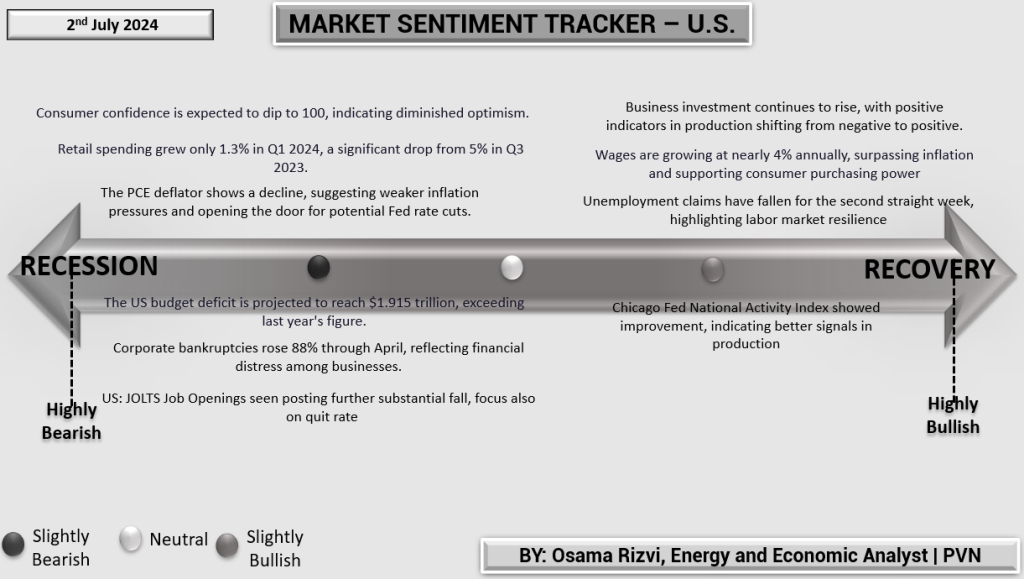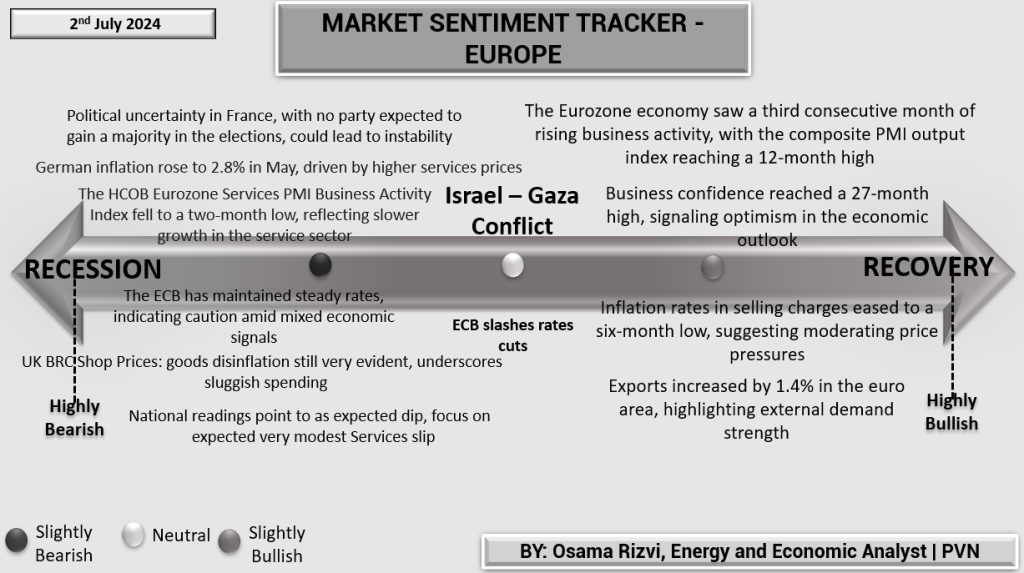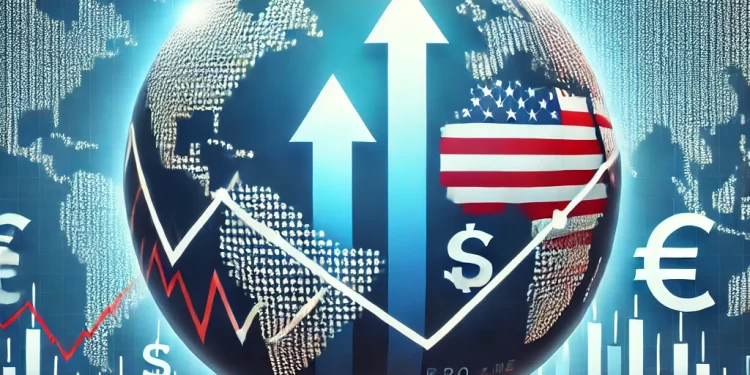United States
The U.S. economy faces a blend of negative and positive trends. Consumer confidence is projected to dip to 100, indicating diminished optimism. Retail spending grew by only 1.3% in Q1 2024, a significant drop from 5% in Q3 2023, while the PCE deflator shows a decline, suggesting weaker inflation pressures and opening the door for potential Fed rate cuts. The U.S. budget deficit is projected to reach $1.915 trillion, exceeding last year’s figure, and corporate bankruptcies have risen by 88% through April, reflecting financial distress among businesses. On the positive side, business investment continues to rise, with production indicators shifting from negative to positive. Wages are growing at nearly 4% annually, surpassing inflation and supporting consumer purchasing power, while unemployment claims have fallen for the second straight week, highlighting labor market resilience. Additionally, the Chicago Fed National Activity Index showed improvement, indicating better signals in production.

China
China’s economic landscape reveals both challenges and growth. The PMI dropped to a three-year low of 49.5, signaling contraction in manufacturing. New export orders fell, and property investment declined by 10.1% year-on-year, indicating weaknesses in key sectors. E-commerce sales declined during the 618 festival, and consumer confidence remains low. Prices on new homes fell at the fastest pace in nearly 10 years, marking the 11th consecutive month of decreases. However, retail sales of consumer goods expanded by 3.7% year-on-year, showing resilience in domestic consumption. Industrial output rose by 5.6% year-on-year, with strong growth in high-tech manufacturing sectors. Fixed-asset investment increased by 4% in the first five months of 2024, highlighting ongoing infrastructure development. China’s exports exceeded $1.4 trillion, growing by 2.7% year-on-year, reflecting robust external trade activity.

Eurozone
The Eurozone presents a mixed economic picture. Political uncertainty in France, where no party is expected to gain a majority in the elections, could lead to instability. German inflation rose to 2.8% in May, driven by higher services prices, and the HCOB Eurozone Services PMI Business Activity Index fell to a two-month low, reflecting slower growth in the service sector. The ECB has maintained steady rates, indicating caution amid mixed economic signals. UK BRC Shop Prices highlight persistent goods disinflation, underscoring sluggish spending. Despite these challenges, the Eurozone economy saw a third consecutive month of rising business activity, with the composite PMI output index reaching a 12-month high. Business confidence reached a 27-month high, signaling optimism in the economic outlook. Inflation rates in selling charges eased to a six-month low, suggesting moderating price pressures. Exports increased by 1.4% in the euro area, highlighting external demand strength.














